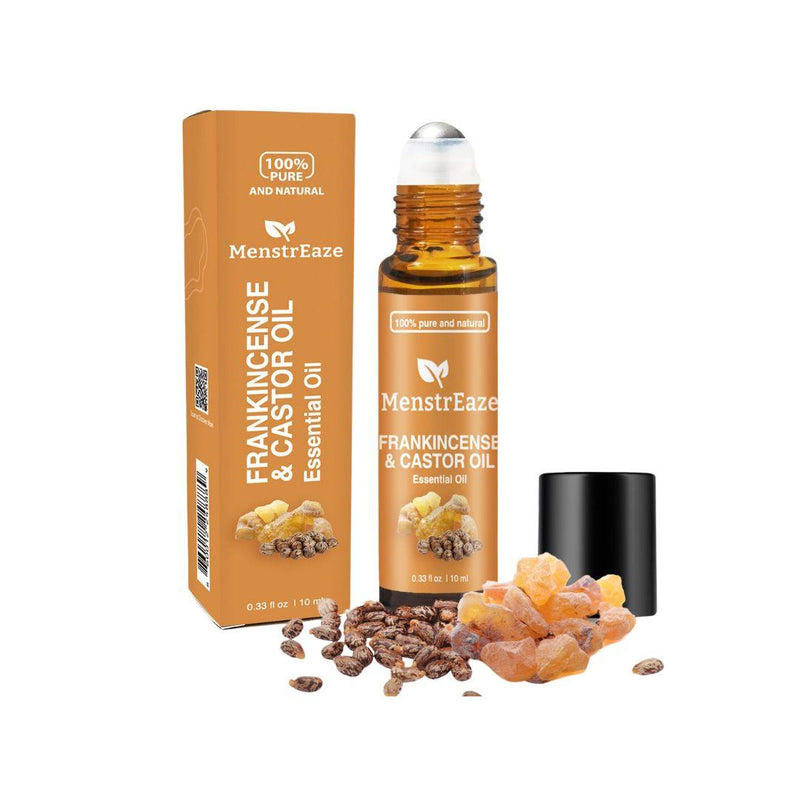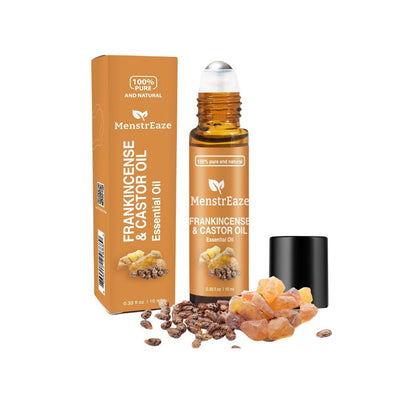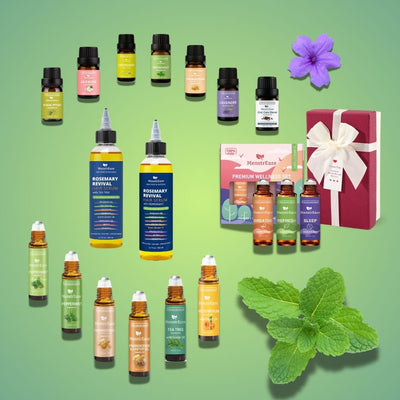Castor oil is experiencing a resurgence in popularity, touted on social media as a natural anti-aging remedy [1] and by wellness blogs for its skin benefits [2]. This isn't new; derived from Ricinus communis seeds [8], it has a long history in traditional medicine (e.g., ancient Egypt, India) [1]. While its only FDA-approved use is as a stimulant laxative [8], it's a common cosmetic ingredient [9]. But what about pure castor oil for the face? Let's examine the science. (Importantly, the toxin ricin from castor beans is removed during oil processing, making commercial oil safe [1]).
What's Inside? The Science Behind Castor Oil
Castor oil's uniqueness lies in its high concentration (80-90%) of ricinoleic acid, an omega-9 fatty acid [1, 22]. This acid is credited with many of its moisturizing, anti-inflammatory, antimicrobial, and analgesic effects [1]. It also contains other fatty acids like oleic and linoleic acid (for skin barrier) [13], triglycerides (moisturizing) [12], and Vitamin E (antioxidant) [6]. Other minor compounds include salts, esters, phytosterols, and polyphenols [6].
Physically, it's a thick, viscous liquid [1] with good stability against oxidation, thanks to its monounsaturated nature and Vitamin E [44]. While ricinoleic acid offers potential benefits, it can also cause skin irritation in some [17], underscoring the need for patch testing [8].
The Buzz vs. The Science: Claimed Facial Benefits
-
Moisturization and Hydration: This is its most accepted benefit [1]. Ricinoleic acid and triglycerides make it occlusive (locks in moisture) and potentially humectant (retains moisture) [14, 13, 12]. Its use in cosmetics [9] and expert opinion [17] support this, along with a small trial showing hydration improvement [41].
- Conclusion: Best-supported benefit.
-
Anti-inflammatory Properties: Claimed to reduce redness, swelling, and soothe conditions like eczema or sunburn [1], primarily due to ricinoleic acid [1, 11]. Animal and in vitro studies show potential [11, 36], and it's in some wound ointments [8] and studied for eye inflammation [10].
- Conclusion: Plausible, supported by preclinical data, but lacks direct human facial skin trials [41].
-
Acne Reduction: Popular but controversial, claiming it kills bacteria, reduces inflammation, and cleanses pores [6]. Theoretically, ricinoleic acid's antimicrobial [6] and anti-inflammatory [6] effects, plus a low comedogenic rating [12], could help.
- Conclusion: Lacks robust scientific validation for facial acne [8, 9]. Dermatologists are skeptical [20]; some users report worsening acne [4].
-
Anti-Aging Effects (Wrinkle Reduction): Promoted to reduce wrinkles [1] via Vitamin E's antioxidant action [6, 9] and its moisturizing/plumping effect [9]. Claims of collagen stimulation lack evidence [28]. One small trial with a 10% castor oil cream showed some wrinkle reduction, but more research is needed [21].
- Conclusion: Limited evidence beyond temporary moisturizing effects [28, 34].
-
Other Potential Benefits:
- Wound Healing: Some support from animal studies and its use in ointments [1, 8].
- Reducing Dark Circles/Hyperpigmentation: One small trial with a cream showed promise [21]; a phenol-castor oil peel (different application) was used for melasma [57]. More research needed [41].
- Soothing Sunburn/Dry Lips: Plausible due to anti-inflammatory and moisturizing properties [9].
- Improving Skin Texture: Linked to moisturizing effects [12]. Many claims extrapolate from lab or non-facial studies [36], lacking direct proof for human facial skin [8, 17].
Putting Castor Oil to Work: How to Use It
If trying castor oil, proper use is key due to its thickness.
- General Advice: Apply to clean skin [9]. Use sparingly [1]. Patch test first [8].
- Dilution: Highly recommended. Mix with lighter carrier oils like jojoba, almond, or olive oil [1]. Ratios vary (e.g., 1:1 [12], a few drops in moisturizer [17], or 10% castor oil [61]).
-
Application Methods:
- Moisturizer/Serum: Gently massage a few drops of diluted oil onto face/neck. Can be left overnight or wiped off [13, 9, 34, 53]. Apply after water-based products, before heavier creams [47]. May feel tacky [43].
- Oil Cleansing Method (OCM): Uses oils to dissolve impurities [62]. Castor oil is often the "cleansing" agent but can be drying alone [42]. Ratios vary by skin type (e.g., more castor for oily, less for dry) [42, 62]. Massage onto dry skin, steam with a warm cloth, then gently wipe away [42, 9]. A muslin cloth might be needed for removal [43].
- Spot Treatment: Tiny amount on specific areas [14].
- DIY Face Masks: Mix with ingredients like honey [47], avocado [47], clay [54], turmeric [53], oatmeal [54], or aloe vera [54]. Use essential oils with caution [20]. Proper dilution and thorough removal are crucial [8, 17].
Proceed with Caution: Potential Risks
- Skin Irritation/Allergic Reactions: Redness, itching, or rash can occur [3], especially with sensitive skin or dermatitis [9]. Allergic contact dermatitis is possible [10]. Severe reactions are rare [18]. Patch test is vital [8, 17].
- Comedogenicity (Pore-Clogging): Generally rated low (1 on a 0-5 scale) [4, 44, 67, 60, 48, 52] (one source says 2 [69]), suggesting it's unlikely to clog pores for most. However, its thickness raises concerns for acne-prone or oily skin [28, 20]. Ratings aren't absolute [60, 68]. Fungal acne has been anecdotally reported [4].
- Other: Avoid direct eye contact (can cause irritation/damage) [3, 39, 34]. Ricin is removed during processing [1]. Oral use side effects (cramping, diarrhea) [3, 18] are not typical of topical facial use.
Decoding the Labels: Types of Castor Oil
- Cold-Pressed: Mechanically pressed without heat, preserving natural compounds. Typically clear/pale yellow, milder scent [13, 30, 50, 19]. Often preferred for facial skincare [50].
- Jamaican Black Castor Oil (JBCO): Seeds are roasted (creating ash), ground, boiled, and oil skimmed. Dark brown/black, thicker, smoky aroma, more alkaline (higher pH) [19, 30, 22]. Popular for hair growth and deep moisture; alkalinity may irritate sensitive skin [19, 30, 71]. Some question its superiority over cold-pressed [72].
- Hexane-Free: Indicates absence of hexane solvent during extraction [1]. Cold-pressed is inherently hexane-free. Preferred for a more natural product [1, 16].
- Yellow Castor Oil: Often synonymous with cold-pressed [22, 19].
The choice depends on priorities (purity vs. traditional processing) and intended use [30, 22].
Recommendations
- Might Consider: Individuals with very dry, non-sensitive, non-acne-prone skin seeking a heavy-duty natural moisturizer [13].
- Caution/Avoid: Those with acne-prone, oily, sensitive skin, or dermatitis [9].
- Safe Use (If Trying): Patch test [8]. Always dilute with a carrier oil [8]. Start slowly. Choose high-quality (cold-pressed, hexane-free) [13]. Ensure thorough removal [17].
Ultimately, castor oil offers some moisturizing benefits but isn't a miracle cure for major facial skin issues. Approach with realistic expectations and caution.
Considering a Convenient Castor Oil Application: The Frankincense & Castor Essential Oil Roll-On
For those intrigued by the potential moisturizing and soothing benefits of castor oil, particularly for targeted concerns like under-eye skin and fine lines, but who may be hesitant about handling pure, thick castor oil or determining appropriate dilutions, a prepared formulation can offer a convenient and user-friendly alternative.
The Frankincense & Castor Essential Oil Roll-On for Wrinkles and Dark Circles (10 ml) presents a ready-to-use option that combines 100% Pure Castor Oil with Steam-Distilled Frankincense Essential Oil. This blend aims to leverage the established moisturizing properties of castor oil alongside the reputed skin-enhancing qualities of frankincense.

Product Highlights:
- Pre-Diluted and Blended: The product description emphasizes a "Gentle & Skin-Friendly Formula," suggesting that the castor oil is appropriately balanced with frankincense essential oil, potentially mitigating some of the concerns about the heaviness or irritation potential of undiluted castor oil discussed earlier. Frankincense essential oil is often valued in skincare for its potential to soothe, rejuvenate, and tone the skin, which could complement the hydrating effects of castor oil.
- Targeted Application: The "precise, mess-free roll-on" applicator is designed for easy application to delicate areas like under the eyes, around the nose, and on the neck. This addresses the practical challenge of applying thick castor oil neatly and allows for spot treatment, which can be a good way to introduce an active ingredient to the skin.
- Focus on Hydration and Soothing: Benefits such as "Deeply hydrates, revitalizes, and enhances skin for a radiant, youthful glow" and "Hydrates & soothes delicate skin without irritation" align with the best-supported benefit of castor oil – moisturization – and its plausible anti-inflammatory potential. The cooling stainless steel rollerball is also noted to enhance absorption and reduce puffiness, which can be particularly beneficial for the under-eye area.
- Natural Formulation: The product highlights its "100% natural & chemical-free" composition (no parabens, synthetic fragrances, or additives), catering to consumers seeking simpler formulations.
- Suitability for Sensitive Areas: Its claim of being "suitable for all skin types—perfect for delicate areas like under the eyes and sensitive facial skin" suggests careful formulation, though individual patch testing (as recommended universally in the article for any new product) remains crucial.
The roll-on format encourages targeted use, potentially enhancing hydration and providing a refreshing sensation to areas prone to dryness and fine lines. As with any skincare product, individual results will vary, and patch testing is advised, especially given the product is intended for use on sensitive facial skin.

Conclusion
Castor oil is not the miracle facial cure-all that social media trends might suggest [3]. Its primary value for facial skin appears to lie in its potent moisturizing properties, making it a potentially useful, albeit heavy, emollient for very dry skin types. While other benefits like anti-inflammatory or antimicrobial effects are plausible based on its high ricinoleic acid content, they lack strong scientific validation specifically for treating common facial conditions like acne or wrinkles.







